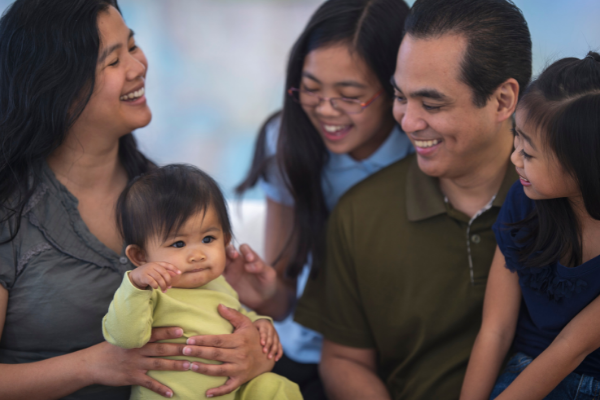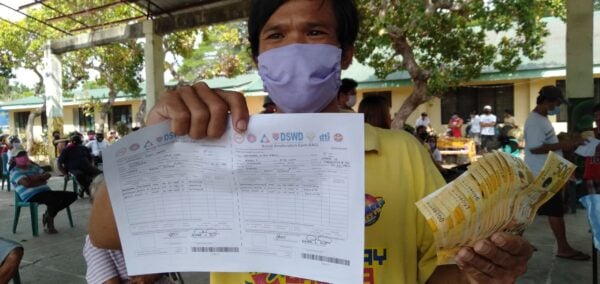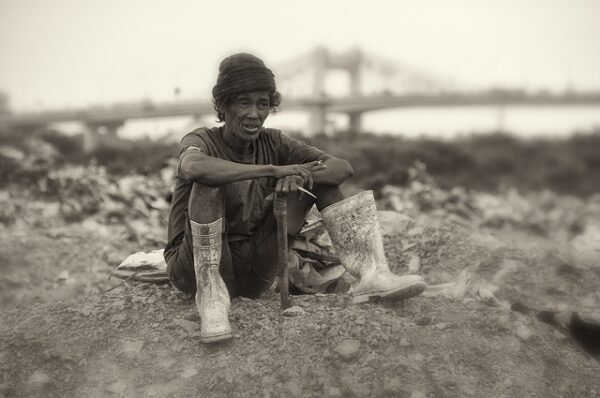social stratification
Sociologists use the term social stratification to describe the system of social standing.
Social stratification refers to a society’s categorization of its people into rankings of socioeconomic tiers based on factors like wealth, income, race, education, and power.
When talking about income inequality in the Philippines, the discussion would always focus on the poor vs. rich divide. But with the recent economic challenges that the country has faced, it has shifted to the poor vs. middle class.
As such, low-income families are prioritized when it comes to receiving government help like relief goods and cash aid especially during the first year of the pandemic. On the other hand, middle-class households hardly receive government assistance.
This raises the question: Who should the government help more, the poor or the middle class? Before we get to that, it's important to understand first the different social classes in the Philippines.
What is the Meaning of Social Class?
Contrary to popular belief, social class is more than just about how much money you're making.
Sociologists define social class as a group of people with similar socioeconomic status or standing within the society based on the level of income, education, and occupation.
Social classes range from low to high and often reveal inequalities in terms of power, influence, and access to resources.
Which Social Class are You?

3 Social Classes in the Philippines: Low, Middle, and High Income
Three primary social classes exist in the Philippines: the low-income class, the middle-income class, and the high-income class.
The latest Family Income and Expenditure Survey by the Philippine Statistics Authority (PSA) shows that majority (58.4%) of Filipinos belong to the low-income class, while the middle class comprises around 40% of the population. Only 1.4% fall in the high-income class.
The Philippine Institute for Development Studies (PIDS), the government's socio-economic policy think tank, notes that the low-income class has a bigger share of the population because they tend to have larger families than other social classes.
The middle class is further classified into lower, middle, and upper middle-income classes.
In between the poor and the middle class is another social class called the low-income class—they're not middle class but not considered poor.
And then there's the upper-income class in between the middle class and the rich. Although people in this social class make six-digit figures monthly, they're not considered among the elite group of the wealthiest in the Philippines.
For policy-making and public service purposes, the Philippine government looks at the per capita income (in relation to the poverty threshold) to classify the income level of its citizens and to assess their standard of living.
The current average estimated poverty threshold in the Philippines is ₱12,082, which is the minimum amount a family of five needs in a month to buy their basic food and non-food items. If your family income is higher than the poverty threshold, the government doesn't consider you poor.
Types of Social Class in the Philippines
Who Exactly is the Middle Class?

How do you know if you're middle class? Is it the clothing brands you wear? The places you've traveled to?
The government defines the middle class as those earning incomes between two to 12 times the poverty line. This means if your family income is between around ₱24,000 and ₱145,000, you fall in the middle-income class.
A 2018 PIDS study provides deeper insights into the middle class in the Philippines. Here are some important and interesting facts to know about the social structure in the Philippines, specifically the country's middle class vis-à-vis their poor and low-income counterparts:
Facts About the Middle Class in the Philippines
- Middle-income households have significantly greater access to education, health, and other services (not necessarily from the government).
- Most of them live in urban areas, especially in Metro Manila and nearby areas.
- Three in every four middle-income households live in a space that they own, while 23% rent. A small percentage (3%) of the middle class live in the slums, but they make up a large chunk of informal settlers in the country (42%). This is attributed to the lack of affordable housing in the cities.
- Middle-class workers have stable jobs (mostly salaried) in wholesale and retail trade, transportation, communication, and government sectors. These include sari-sari store owners, tricycle and jeep drivers, bus conductors, call center agents, public school teachers, clerks, private-sector employees, and government workers.
- They have higher educational attainment, which is why more of them have better-quality jobs.
- Their families are smaller with fewer children.
- Middle-class families spend more on their children's education, sending them to private schools and getting them tutoring services.
- In Metro Manila and other traffic-congested cities, most cars are owned by the middle class.
- Middle-class households are less dependent on the government, shifting away from using public services and leaning towards private ones. This is especially true in the case of transportation, healthcare, and education.
Which Social Class Must the Government Help?

Amid the pandemic, the government has prioritized the poorest of the poor in terms of providing financial support. It has allocated ₱200 billion for the social amelioration program to help 18 million low-income households tide over for two months during the enhanced community quarantine in Luzon. Each of these families received cash aid between ₱5,000 and ₱8,000.
On social media, Filipinos engaged in heated debates about which social class deserves to receive more government assistance during a crisis. Is it the poor who have nothing, or the hardworking, tax-paying middle class?
This issue has sparked appeals for the expansion of the social amelioration program's coverage to include the middle class. After all, even though they rely less on government help, it doesn't mean the middle class is completely resilient to a financial crisis. They're just as affected by it as the poor.
Government Financial Assistance for the Middle Class
To the government's credit, it has responded to the calls for assistance to middle-class families with the Small Business Wage Subsidy Program. It benefitted 3.4 million middle-class workers of micro, small, and medium enterprises during the height of the pandemic. The program gave cash aid worth ₱5,000 to ₱8,000 for two months to affected workers.
Aside from that, other ongoing government assistance programs, such as the SSS unemployment benefit, cover the middle class.
Why the Poor Need More Help

Valid as their grievances are, some people in the middle class assert that the poor don't deserve government assistance because they're not working hard and just relying on government dole-outs.
However, according to Jose Ramon Albert, senior research fellow at the PIDS, what people fail to realize is that when the economy is down [due to the crisis], it's the poor who suffer the most. "[They're] much more affected, so they need more help than us,” he said in an interview with ABS-CBN News.
Considering the government's limited funds, giving them the priority for government assistance makes a lot of sense. The PIDS study also notes that if the government shifts public resources away from the poor toward the middle class, this would impede inclusive growth in the country, make it harder for the poor to reach middle-class status, and make the current socio-economic divide worse.
While everyone is affected by the health crisis and the oil price hikes in one way or another, vulnerable groups—the poor, low-income class, and lower middle class—have it worse. They're at a higher risk of losing livelihood. Thus, they deserve support not just from the government but also from the upper class in the Philippines who are in a position to help others.
The National Economic and Development Authority (NEDA) Ambisyon NATIN 2040 proposes that expanding the Filipino middle class is key to achieving Philippine development goals. Many scholars believe that the middle class play a big part in the Philippines' drive for progress and equality.
Moreover, the country should work to create more job opportunities that pay well and improve financial services and the quality of education, skills, and training of the labor force.
In short, this shouldn't be a battle between social classes in the Philippines. In the grand scheme of things, it should be about the poor and low-income becoming middle-income and enjoying a better quality of life.
Comments:

